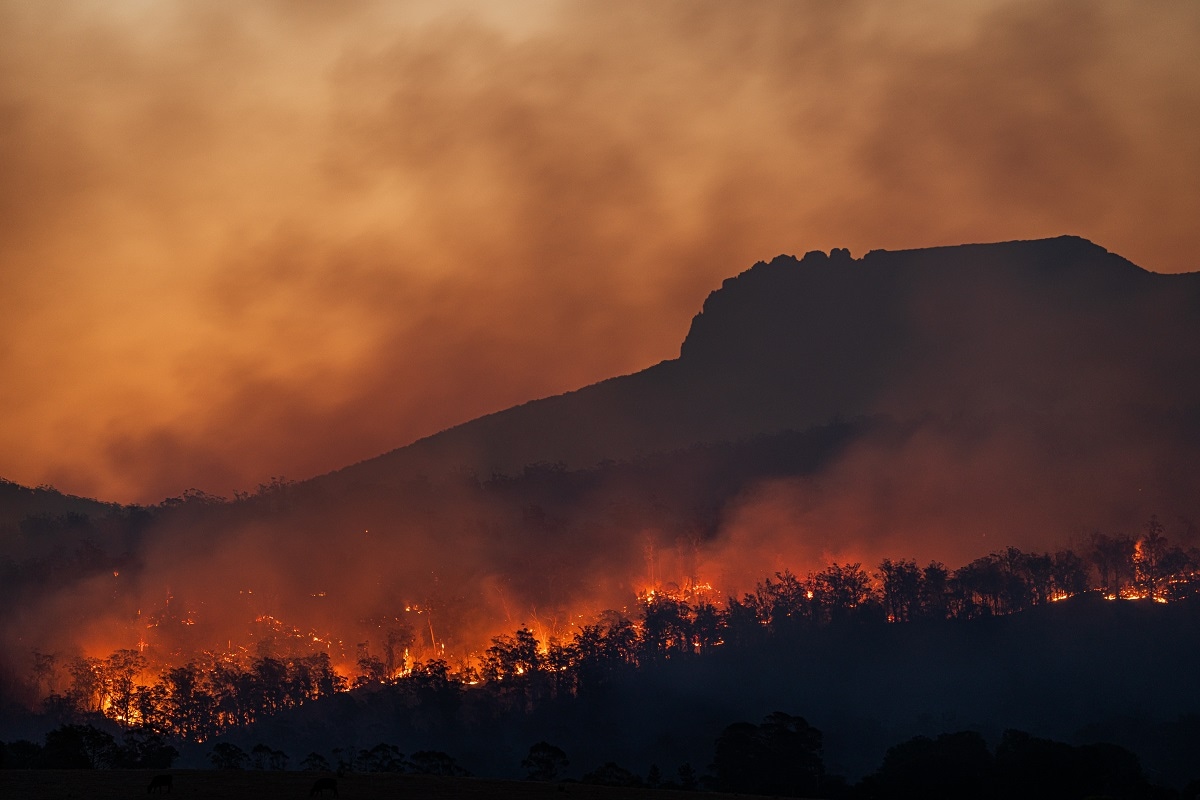A principle isn’t a principle until it costs you something, the adage goes.
Since 2015, successive Lowy Institute polls have found that the majority of Australians support action on climate change, even if it involves significant costs.
But as energy prices rise, cost of living pressures mount, and global economic headwinds strengthen, this principled position on climate change is about to be stress-tested.
Recent polling by Resolve Political Monitor for The Sydney Morning Herald found that rising cost of living pressures are already diluting the urgency of Australians’ support for climate action.
The SMH reported that only 45% of Australian voters agree that climate change is a “serious and urgent problem” requiring action “even if that involves significant costs and sacrifices”. According to the survey, economic pressures now dominate voter concerns.
These levels of support for climate action are markedly lower than recorded in the 2023 Lowy Institute Poll, which, asking a similar question, found that more than half of Australians (56%) see climate change as a “serious and pressing problem” requiring action “even if this involves significant costs”. Lowy polling also showed that Australians remain relatively confident on the economy – 62% still have some level of optimism about Australia’s economic performance in the next five years, steady from 2022.
What explains the gap between the polls?
Timing is likely a factor. Since the Lowy Institute Poll went to field in March, cost of living pressures have only sharpened, large numbers of Australians are approaching or have fallen off a mortgage cliff, and global growth is expected to slow further. Differences in methodology and wording may have also contributed to the divergence (the full Resolve survey and methodology is not publicly available).
The bigger picture, however, is that an economic downturn could pose a risk to public appetite for climate action as attention shifts towards short-term trade-offs, squeezing the space for longer-term investments. This could play out in Australia and globally.
Given repeated warnings by the global scientific community that our window to avert catastrophic climate change is rapidly closing, now is not the time to lose focus.
In this context, it’s worth looking at how the notion of "cost" has evolved.
First, the cost of action is declining. When the Lowy Institute started polling in 2005, the cost of renewable energy and low emissions technologies presented steep barriers to reducing the country’s national carbon footprint. Today, those technologies are far cheaper and more accessible, making decarbonisation at an individual, industry, and societal level more achievable. For example, Australia has among the highest rates of solar uptake in the world. According to the Australian National University, one-third of Australian households have already installed solar panels, and an additional 30% are expecting to do so in the next ten years. Uptake is being spurred by the rising cost of electricity from the grid (largely generated by fossil fuels) and the falling cost of solar panels.
This is not to pretend that the transition to net zero will be easy. In the near term, huge upfront investments are required to transform our energy infrastructure, and the reality is some communities and sectors, including those built around the coal industry, will be impacted. This is where government intervention is necessary, to build the case for investments that deliver longer-term productivity gains for the country, while supporting affected communities through economic diversification and reskilling.
Second, the costs of inaction are increasing. Climate-driven weather volatility and more frequent disasters such as fires, droughts and floods are damaging infrastructure, driving up food costs and disrupting supply chains globally. Australia is especially susceptible. In economic terms alone, on conservative estimates, disasters could cost Australia $73 billion a year by 2060, and much more unless emissions are rapidly curbed. Research by the Bennett Institute for Public Policy at the University of Cambridge simulates the likelihood of climate-induced downgrades to sovereign credit ratings. It puts Australia at high risk of losing its AAA credit rating by 2030 even if the world limits warming to two degrees, leading to businesses and taxpayers footing hundreds of millions of dollars in additional interest payments every year.

Third, there are huge economic opportunities in a net zero world. Economist Ross Garnaut argues that Australia is uniquely positioned to become a renewable energy superpower. We have rich endowments of wind and solar resources, giving us access to the world’s cheapest energy in immense quantities. As the world’s largest minerals exporter, we can use our competitive advantage in clean, low-cost energy to move up the value chain into carbon-neutral processing, including of hydrogen and steel. And we have the resources to be the world’s largest exporter of high demand energy transition minerals such as lithium, cobalt and nickel.
Garnaut challenges us to think in bigger terms – the opportunity is not just to decarbonise Australia, which accounts for 1% of global emissions, but to supply Northeast Asia and Europe with zero-carbon energy and resources that reduce global emissions by at least 7%, while setting up Australia’s economy to thrive for decades.
The Australian government appears to have picked up this idea and is investing in the development and export of green hydrogen. But to position Australia as a leader, it will need to move quickly to shore up capital and talent. Competition is heating up as our international partners, most notably the United States through its Inflation Reduction Act, pour hundreds of billions into accelerating their own transitions to net zero.
So yes, the cost of living crisis is real, as are the investments required to act on the climate crisis. But we must not lose sight of the escalating costs of inaction. Nor of the generation-defining economic opportunity for Australia in a post-carbon world.

